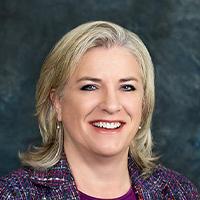Financial experts agree an HSA may be the smartest addition to your retirement savings plan. So are you taking advantage of one?

A health savings account (HSA) is often overshadowed by 401(k)s and IRAs when it comes to retirement planning.
But an HSA could be the secret you need to maximize your retirement savings if you’re eligible to take advantage of one.
What is an HSA?
A health savings account (HSA) is a tax-favored savings account combined with a high-deductible health plan (HDHP).
The purpose of an HSA is to help people pay their out-of-pocket medical costs with pre-tax savings. So the distributions are only to be used for qualified medical expenses.
Here’s an example of how an HSA works:
Jenny has an HSA plan with a $2,500 deductible. She incurs $2,900 in medical expenses.
Jenny will be reimbursed $2,500 from her HSA account tax-free. Then her insurance provider will reimburse the remaining $400 tax-free.
Just like a 401(k), your employer may offer an HSA with matching contributions. But you can also open one on your own, which is especially helpful for self-employed retirement savings plans.
To qualify for an HSA, you must:
- Have a high-deductible health plan (HDHP) and no other health insurance. In 2019, an HDHP was defined as one with a deductible higher than $1,350 for an individual and higher than $2,700 for a family.
- Not yet qualify for Medicare
- Not be claimed as a dependent on someone else’s tax return
What Makes an HSA Optimal for Retirement?
It’s smart to add an HSA to your retirement savings because:
You’ll Score a Triple Tax Advantage
HSAs offer three tax-free benefits:
#1. Contributions are tax-deductible , even if you don’t itemize.
You can contribute via payroll deductions from your employer. Contributions your employer makes do not have to be included as part of your taxable income.
You can also use your own funds if you’re self-employed or don’t have an employer-sponsored HSA program. If you’re funding your HSA solo, contributions are considered pre-tax so they may lower your federal and state income taxes.

Allowable annual contribution limits in 2019/2020 are:
- $3,500/$3,550 for self-only coverage
- $7,000/$7,100 for those with family health plans
#2. Growth is tax-free . All the interest, dividends, or capital gains earned are nontaxable. There are no required minimum distributions either so you can keep investing funds and growing your account.
#3. Distributions for qualified medical expenses are tax-free . This means you won’t have to pay income taxes on withdrawals from your HSA when they’re used for healthcare costs.
Reimbursements for Costly Medical Expenses
Many HDHPs completely cover preventive care services before you meet your deductible.
With healthcare costs rising, an HSA protects you and your family from expenses your insurance policy may not cover, such as:
- Doctor visits, tests, and X-rays
- Surgical procedures and hospitalization charges
- Physical therapy
- Insulin and diabetic testing supplies
- Prescription drugs
- Certain OTC drugs (some qualify but now need a prescription from your doctor)
- Acupuncture and chiropractic care
- Eye exams, glasses, and laser eye surgery
- Hearing test and hearing aids
- Dental exams, dental work, and dentures
- Alcohol and drug abuse treatment
- Wheelchairs and walkers
HSA distributions can also be used for long-term care expenses, including:
- In-home nursing
- Retirement community fees for lifetime care
- Nursing home fees
- Long-term care insurance
You can even use your HSA withdrawals to make modifications to your home as you age, such as adding wheelchair ramps, handrails, and grab bars in bathrooms and bedrooms.

While HSAs cannot be used to pay for other health insurance, they can be used to pay for COBRA continuation coverage (including dental and vision), long-term care insurance, health insurance coverage while receiving unemployment compensation, and Medicare premiums and out-of-pocket expenses (Part A, Part B, Medicare HMOs, and new prescription drug coverage). They cannot be used to pay for Medigap insurance.
You should not use distributions to pay for every day medical expenses . Your HSA should be a savings account for the big unknown healthcare expenses you may face during retirement.
Do not use distributions to cover non-medical healthcare costs. You’ll face a penalty tax of 20% if you take distributions for unqualified medical expenses before age 65. You’ll also have to pay income tax on that withdrawal.
HSAs are Portable
Since you own the HSA account, not your employer, an HSA is totally portable. So if you decide to leave your job, your HSA goes with you.
You’re Not Forced to Withdraw Funds at a Certain Age
You can contribute to an HSA until you’re 65 years old and eligible for Medicare.
But you will not be forced to take distributions either before or during your retirement. You’re not legally obligated to begin withdrawing money so it can grow indefinitely.
Your Balance May Be Rolled Over From Year to Year
Unlike a flexible spending account (FSA), you can carry your HSA balance year after year if you don’t use the funds. There’s no “use it or lose it” penalty.
Similar to other retirement savings vehicles, the earlier you start contributing, the higher your balance will be later in retirement.

Assuming you open a Health Savings Accounts when you’re 40 years old and contribute just $100 per month until you reach age 65, you’d have almost $50,000 by retirement (assuming an average annual return of 3%).
That’s why you should always contribute the maximum.
Make “Catch Up” Contributions
You can contribute the maximum each year regardless of your income and it will still be tax-deductible. You can also contribute when you’re not earning an income. But you cannot contribute over the age of 65.
However, you can make “catch up” contributions of an extra $1,000 per year after the age of 55.
Name a Beneficiary
You’ll designate a beneficiary when you open your HSA and this person will receive the funds in your HSA account upon your death.
Married people should choose their spouse as they will be able to inherit your HSA balance tax-free.
A spousal beneficiary can treat the assets as his/her own account but a non-spouse beneficiary must include the assets as ordinary income for tax purposes.
If no beneficiary is named, the assets in the HSA will go to the decedent’s estate.
Once-in-a-Lifetime Rollovers
You are allowed a once-in-a-lifetime limited rollover from your IRA into an HSA. This is called a qualified HSA funding distribution (QHFD) and is designed to give you access to your IRA funds for medical expenses. The QHFD can come from a traditional IRA or Roth IRA or from an inactive SEP or SIMPLE IRA, and only the pre-tax money can be transferred. The after-tax money must be left in the IRA. An inherited IRA can also be rolled over, and the QHFD counts toward an RMD for the year.
The rollover, combined with any other contributions during the year, can’t exceed the year’s contribution limit, and you must remain eligible to participate in the HSA for at least 12 months after making a QHFD.
Despite the limitations of this strategy, it can be a great tool in the right situation.
Ready to Discuss Your HSA Options?
An HSA will allow you to plan for future healthcare costs and supplement your health insurance plan to lower your out-of-pocket expenses now and in retirement.
Treat your HSA like an investment tool for retirement and you’ll have the best way to save, invest, and withdraw funds without paying taxes.
Your HSA investment strategy should align with your other retirement assets. So consider your portfolio, risk profile, and diversification to maximize your investments wisely.
Speak with a financial planner at Castle Wealth Management now, start contributing to your HSA as soon as possible, and you may have a nice retirement stash to look forward to.
To get in touch with our consultants and financial planners, please visit this page or call 561-686-9604 today.

